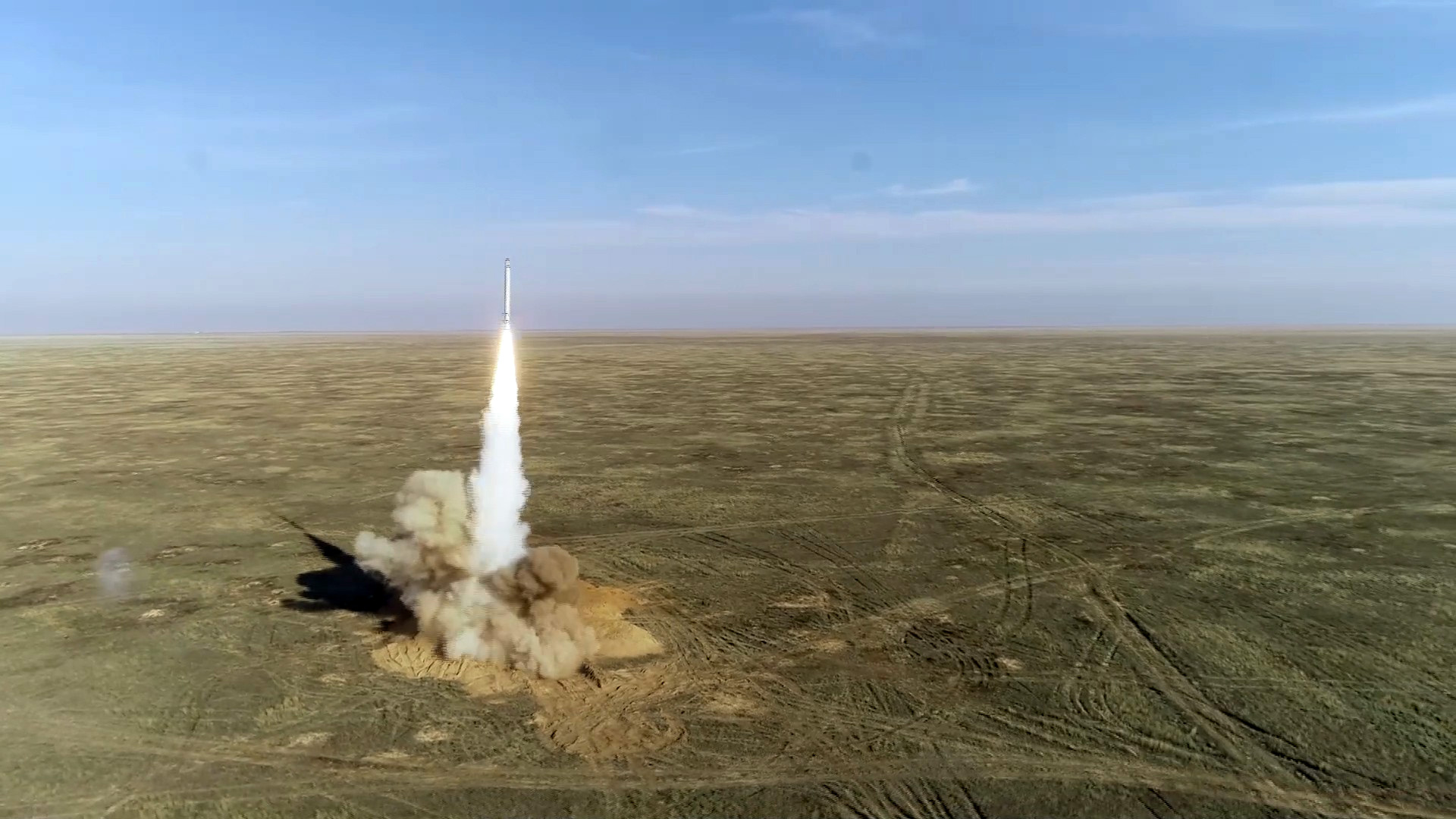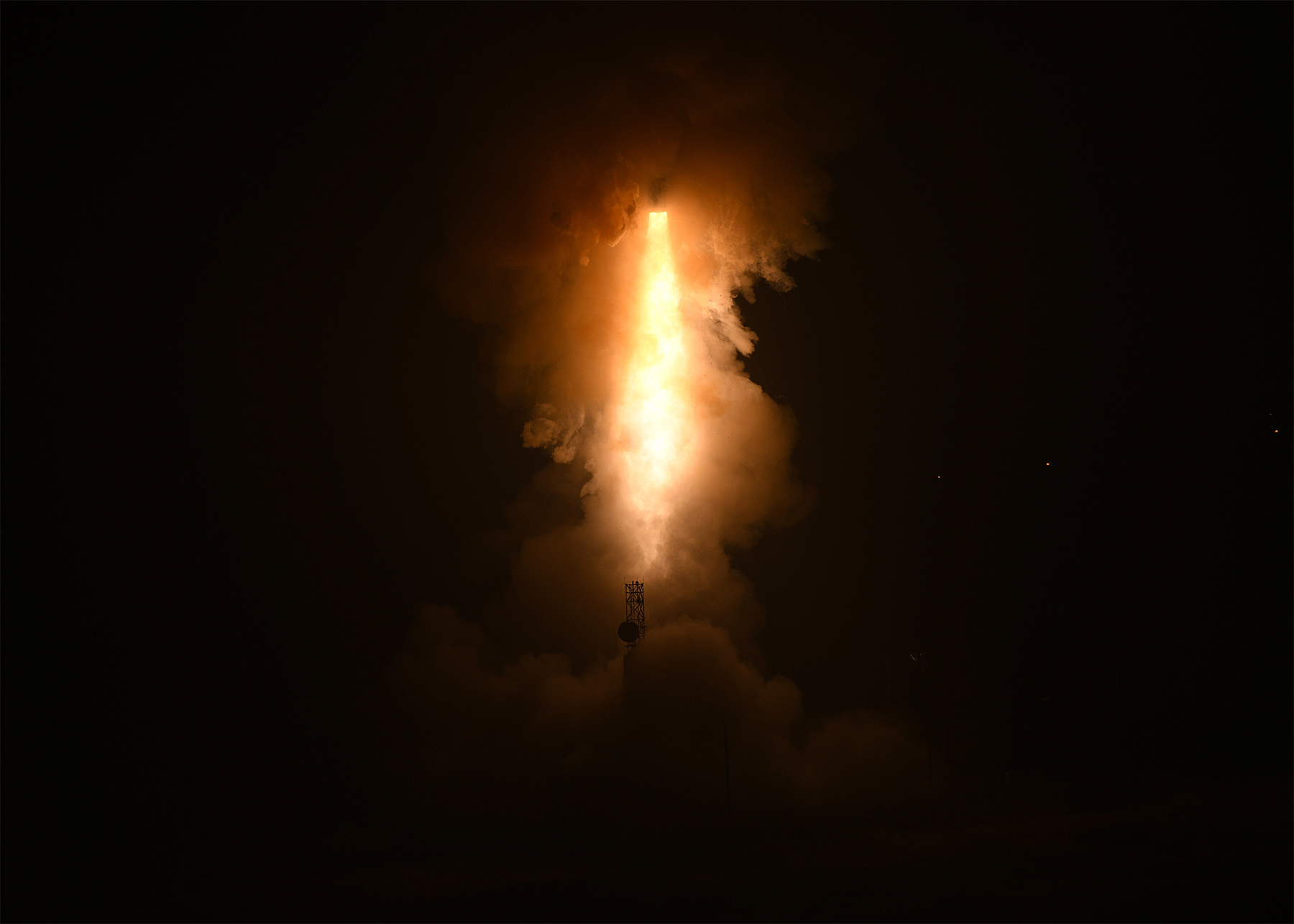On 2nd February 2019, when the United States announced that it intended to withdraw from the INF Treaty on 2nd August, Russian President Vladimir Putin held a meeting with ministers Shoigu and Lavrov to discuss the possible weapons that might be developed in response, and framed a ‘formula’ for the moratorium on their deployment:
“…Russia will not deploy intermediate-range or shorter-range weapons, if we develop weapons of this kind – neither in Europe nor anywhere else until US weapons of this kind are deployed to the corresponding regions of the world.”
This formula has been re-iterated by Russian officials frequently at different levels and in different formats. However, it is still unclear what “corresponding regions” means in practical terms, or how to verify the absence – or the presence – of the missiles (as well as their range). It is also important to stress that Russia disagrees that there are any current deployments of ground-based intermediate and shorter-range missiles.
To kick start a dialogue on a reciprocal moratorium, the parties will have to remove 9M729 and Aegis Ashore from the debate, at least for the time being. They do not however need to withdraw their concerns or previous statements. One way to do it would be to start to talk about IRBMs, no matter how ‘hypersonic’ those will be labelled, leaving cruise missile-related issues out of the equation. It would require a substantial amount of political will, but the alternative is far worse.
Apart from the technical hurdles, there is a political, or even psychological challenge: a widely shared belief that Europe looking for a solution to the post-INF Treaty crisis somehow undermines transatlantic unity. This is counterproductive: a European solution must be seen as a stop-gap until arms control resumes between the US and Russia.
It may be useful to attempt to codify parts of the ‘moratorium’ and establish transparency measures. The symbolic result of such a process would be strong as the world would see that there is still a place for arms control. At the same time, officials, civil and military servants would re-learn how to do arms control. The first and rather immediate deliverable – should the parties engage in proper talks- may be a unilateral pause on any future deployments, so as not to derail the diplomatic process and allow for such restraint to be formalised.
In the current situation, the best possible next step for European countries would be to try to reach out, formally or informally, to Russia to clarify the technical parameters of the proposed moratorium. Some of the questions that require examination and detailed discussion include:
- What are the “corresponding regions”?
- How can we verify the missile specifications and range in the first place?
- Is there a technical, practical dimension to the verification of the absence of INF-range missiles in the regions of concern, or will it be a strictly unilateral declaratory approach?
- Can the “post-INF moratorium” evolve into a regime for long-range missile control for all basing modes, including sea- and air-launched?
- Does Russia care about payloads (nuclear/conventional) for the new US ground-launched missiles?
- Is the moratorium initiative’s final result seen as a politically-binding or legally-binding agreement?
Some answers can be guessed or deducted from statements by Russian officials, both by the military and diplomats, but this is not the proper way to address issues of such importance. Nor is burying one’s head under the pile of grievances related to a treaty that, unfortunately, no longer exists.
The Russian moratorium proposal
On 2nd February 2019, when the United States announced that it intended to withdraw from the INF Treaty on 2nd August, Russian President Vladimir Putin held a meeting with ministers Shoigu and Lavrov to discuss the possible weapons that might be developed in response, and framed a ‘formula’ for the moratorium on their deployment:
“…Russia will not deploy intermediate-range or shorter-range weapons, if we develop weapons of this kind – neither in Europe nor anywhere else until US weapons of this kind are deployed to the corresponding regions of the world.”
This formula has been re-iterated by Russian officials frequently at different levels and in different formats. However, it is still unclear what “corresponding regions” means in practical terms, or how to verify the absence – or the presence – of the missiles (as well as their range). It is also important to stress that Russia disagrees that there are any current deployments of ground-based intermediate and shorter-range missiles.
Russia does not and will not acknowledge any violation of the INF by the deployment of its ground based missile system, 9M729. Moreover, the United States has not expressed any willingness to address Russian concerns over potential US violations of INF, principally the deployment of the Aegis Ashore Mk-41 in offensive mode. Regardless, there is no longer any treaty to violate, and both parties are now free to make whatever deployments they desire. The moratorium is an initiative for the future, although the mutual accusations of INF Treaty non-compliance will have to be addressed eventually.
Last year I argued that this ‘no first deployment’ proposal could and must be part of a broader security architecture. It is yet to be defined and there needs to be agreement over how the moratorium will work in practical terms. A good opening for such discussions is the letter sent by Russia to 50+ countries and international organisations asking to support and/or join this initiative. The first report of a formal proposal surfaced in late September. The most interesting part is that the proposal reportedly includes the possibility of verification measures. The Russian side most likely wanted to find a means to address concerns over Aegis Ashore. However, if there is genuine interest expressed from European (or Asian) countries, ways to address the Russian missile systems could also be discussed and implemented.
This proposal did not receive the attention it deserved from the Western media. In contrast, Russian outlets were active in reaching out to European governments asking for their take on the ‘moratorium letter’. In the immediate aftermath, Germany re-iterated accusations of Russia being the party responsible for the INF’s demise but said that there would be an analysis of the proposal by NATO and the EU. NATO cohesion remains a matter of great importance for Berlin. France in comparison has seemed more interested in seeking a solution. Paris would probably like to see the intermediate-range missiles issue resolved as part of a broader re-thinking and re-building of European security.
NATO responded
with a traditional statement about 9M729 being a grave violation of the treaty, and as long as this ground-launched cruise missile remains in existence, there will be no discussions. When this subject was raised in an interview
with Rose Gottemoeller, shortly before the end of her term as NATO Deputy Secretary-General, she agreed that at least an understanding of the specifics and details within the Russian proposal might be useful.
Post-INF weapons
Now let’s imagine Europe and the world without any limits on INF-range weapons. There are at least three new “traditional” ground-launched weapons in the pipeline on the US side, including a cruise missile and an intermediate-range ballistic missile (IRBM) as well as 500+ km precision strike missile. Moreover, the US Army is a major player within the inter-agencies pushing for hypersonic weapons development, and is responsible for developing the ‘Common Hypersonic Glide Body’ and an appropriate ground-based launcher. These weapons will take at least another half a decade to mature, but a cruise missile (likely for Europe) and a ballistic missile (likely for Asia) will surface within the next few years.
In Russia, the plans are to develop a land-based version of the Kalibr cruise missile and a land-based intermediate-range hypersonic missile. When asked about the threat of US intermediate range ballistic missile (IRBM) deployments near the Russian borders, President Putin mentioned a counter-deployment of sea-based platforms armed with hypersonic missiles closer to the US shores, effectively taking the post-INF crisis to the “multi-domain” phase.
All these weapons, when deployed, will share one trait: relatively short flight times (about 7 minutes compared to around 35 minutes for intercontinental and submarine-launched ballistic missiles, depending on the launch positions) and somewhat concealed road-mobile launchers. No matter what official missions are assigned to them, their existence in the region would make adversaries extremely nervous and prone to miscalculations, especially in times of crises. To make things worse, if and when the deployment of the missiles mentioned above takes place, there will be more pressure to provide relevant missile defences in the regions concerned. This will, in turn, affect other military domains and postures. Is this future desirable for NATO, CSTO, Russia or any other European country? The ‘moratorium initiative’ is a rare moment of opportunity for a different future.
A path forward
To kick start a dialogue on a reciprocal moratorium, the parties will have to remove 9M729 and Aegis Ashore from the debate, at least for the time being. They do not however need to withdraw their concerns or previous statements. One way to do it would be to start to talk about IRBMs, no matter how ‘hypersonic’ those will be labelled, leaving cruise missile-related issues out of the equation. It would require a substantial amount of political will, but the alternative is far worse.
Apart from the technical hurdles, there is a political, or even psychological challenge: a widely shared belief that Europe looking for a solution to the post-INF Treaty crisis somehow undermines transatlantic unity. This is counterproductive: a European solution must be seen as a stop-gap until arms control resumes between the US and Russia.
It may be useful to attempt to codify parts of the ‘moratorium’ and establish transparency measures. The symbolic result of such a process would be strong as the world would see that there is still a place for arms control. At the same time, officials, civil and military servants would re-learn how to do arms control. The first and rather immediate deliverable – should the parties engage in proper talks- may be a unilateral pause on any future deployments, so as not to derail the diplomatic process and allow for such restraint to be formalised.
In the current situation, the best possible next step for European countries would be to try to reach out, formally or informally, to Russia to clarify the technical parameters of the proposed moratorium. Some of the questions that require examination and detailed discussion include:
- What are the “corresponding regions”?
- How can we verify the missile specifications and range in the first place?
- Is there a technical, practical dimension to the verification of the absence of INF-range missiles in the regions of concern, or will it be a strictly unilateral declaratory approach?
- Can the “post-INF moratorium” evolve into a regime for long-range missile control for all basing modes, including sea- and air-launched?
- Does Russia care about payloads (nuclear/conventional) for the new US ground-launched missiles?
- Is the moratorium initiative’s final result seen as a politically-binding or legally-binding agreement?
Some answers can be guessed or deducted from statements by Russian officials, both by the military and diplomats, but this is not the proper way to address issues of such importance. Nor is burying one’s head under the pile of grievances related to a treaty that, unfortunately, no longer exists.
First published in the European Leadership Network.







